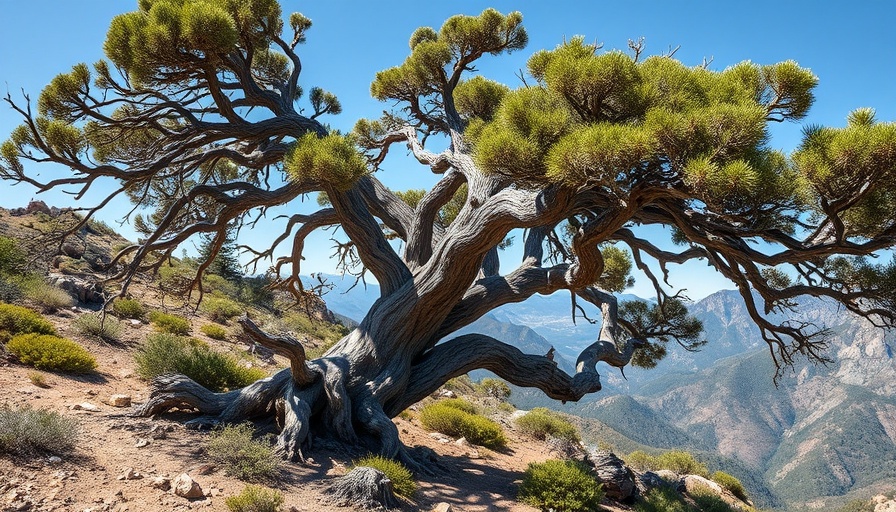
Why Mountain Mahogany Is a Must-Have for Your Garden
If you’re seeking a resilient, drought-tolerant plant for your garden that stands out in beauty and character, mountain mahogany (Cercocarpus spp.) is an excellent choice. Native to the rugged landscapes of the Western U.S. and parts of Mexico, these hardy shrubs and small trees not only add aesthetic value but also serve practical purposes, such as erosion control and creating habitat for wildlife.
All About Mountain Mahogany: A Quick Overview
Mountain mahogany doesn’t just charm hikers and nature enthusiasts; it plays a significant role in native ecosystems. With around nine species, these plants can thrive without much care, making them an excellent addition to any landscape. The name “mahogany” refers to the wood's resemblance to traditional mahogany found in tropical regions, although botanically they belong to the rose family, Rosaceae. Most species grow between 3 to 35 feet, adapting well to various terrains from sandy soils to loamy landscapes.
Growing Mountain Mahogany: Key Care Tips
To cultivate mountain mahogany successfully, consider these essential tips:
- Location: Place your mountain mahogany in full sun to achieve optimal growth. These plants thrive in USDA zones 3-9, showcasing their impressive hardiness against harsh weather conditions.
- Watering: While they are drought-resistant, young plants need regular watering until established. As the plant matures, its water needs significantly decrease.
- Soil Preferences: They are not picky about soil type but do prefer well-draining conditions. Ensure the pH is slightly acidic to slightly alkaline (5.0-8.0) for best results.
Soil and Maintenance: Fertilization and Pest Control
Mountain mahogany’s maintenance is minimal, requiring little intervention once established. They are known to be highly resistant to pests and diseases, but keeping an eye out for common garden intruders like aphids and bark beetles is wise. Regular inspection is crucial, especially during the spring and summer growth periods. When it comes to fertilization, limit application to the growing season if necessary, using organic fertilizers to support soil health.
The Beauty of Mountain Mahogany in Landscaping
These hardy plants are perfect for landscaping projects. Provided their minimal care requirements allow them to fit seamlessly into busy lifestyles. Ideal uses include:
- Hedges: Create privacy screens with dense plantings.
- Wildlife Gardens: Attract local wildlife, such as bees, birds, and small mammals.
- Xeriscapes: Incorporate mountain mahogany into water-wise gardens.
Propagation: How to Grow More Mountain Mahogany
Mountain mahogany can be propagated from seeds, cuttings, or layering techniques. Patience is key, as these methods require time for roots to develop properly. If you are starting with seeds, remember that their feathery tails help in wind dispersal, and they respond well to natural stratification over winter.
Winter Care Considerations for Your Mountain Mahogany
Winter can be harsh, but mountain mahogany comes equipped with resilience. Here’s what you can do to ensure its survival:
- Mulch: Apply a thick layer of mulch around the base to protect roots from freeze.
- Watering: Reduce watering frequency, but ensure the plant isn’t left to completely dry.
- Pruning: Address any dead or diseased branches during late winter before new growth begins.
Final Thoughts: Embrace Mountain Mahogany
In conclusion, mountain mahogany stands out as a remarkable addition to any garden—providing beauty, functionality, and ecological benefits. If you're looking to diversify your garden plants with low-maintenance natives that tolerate a variety of conditions, consider planting mountain mahogany. It’s not just about the aesthetics; it's about supporting local ecosystems, too!
 Add Row
Add Row  Add
Add 




Write A Comment